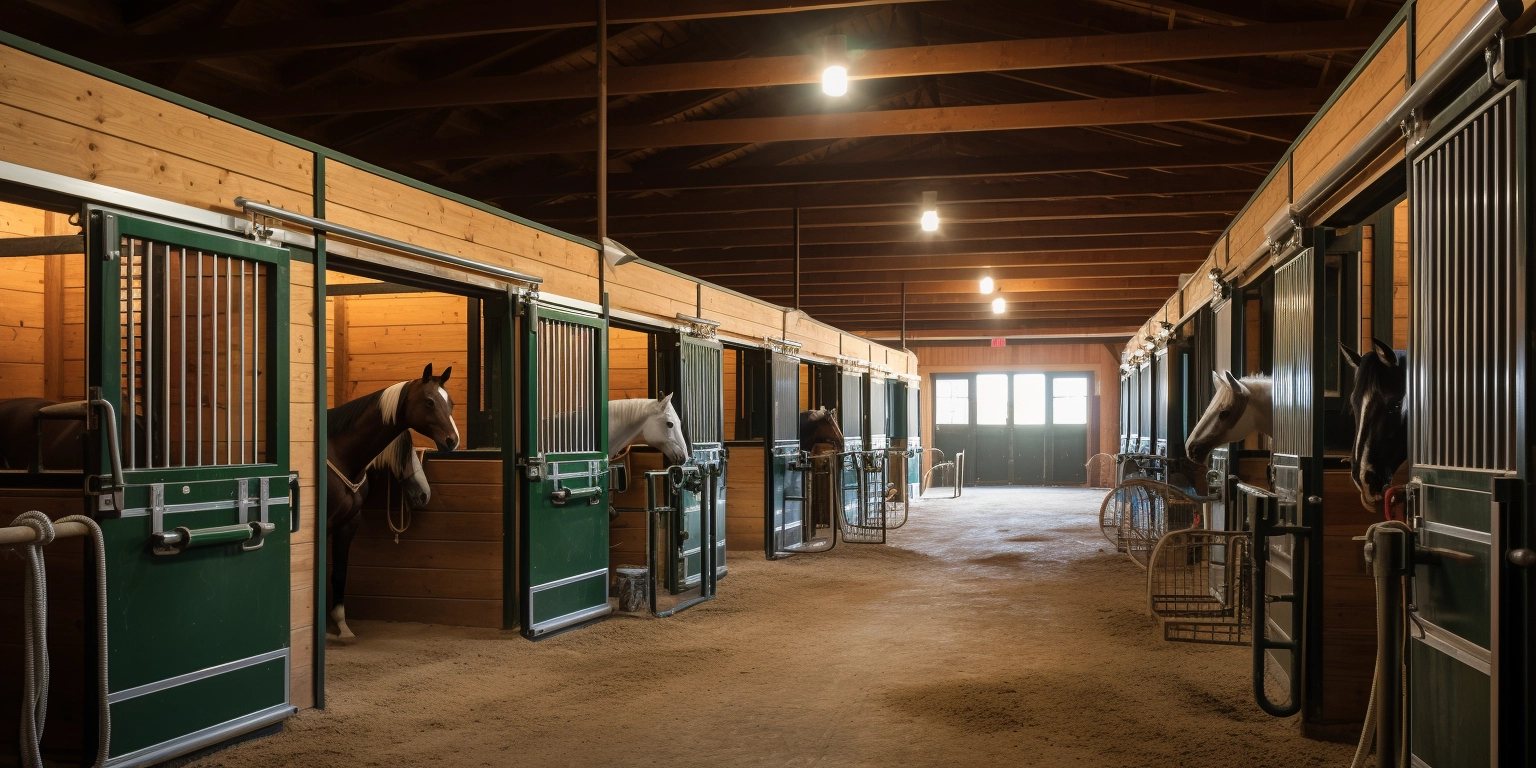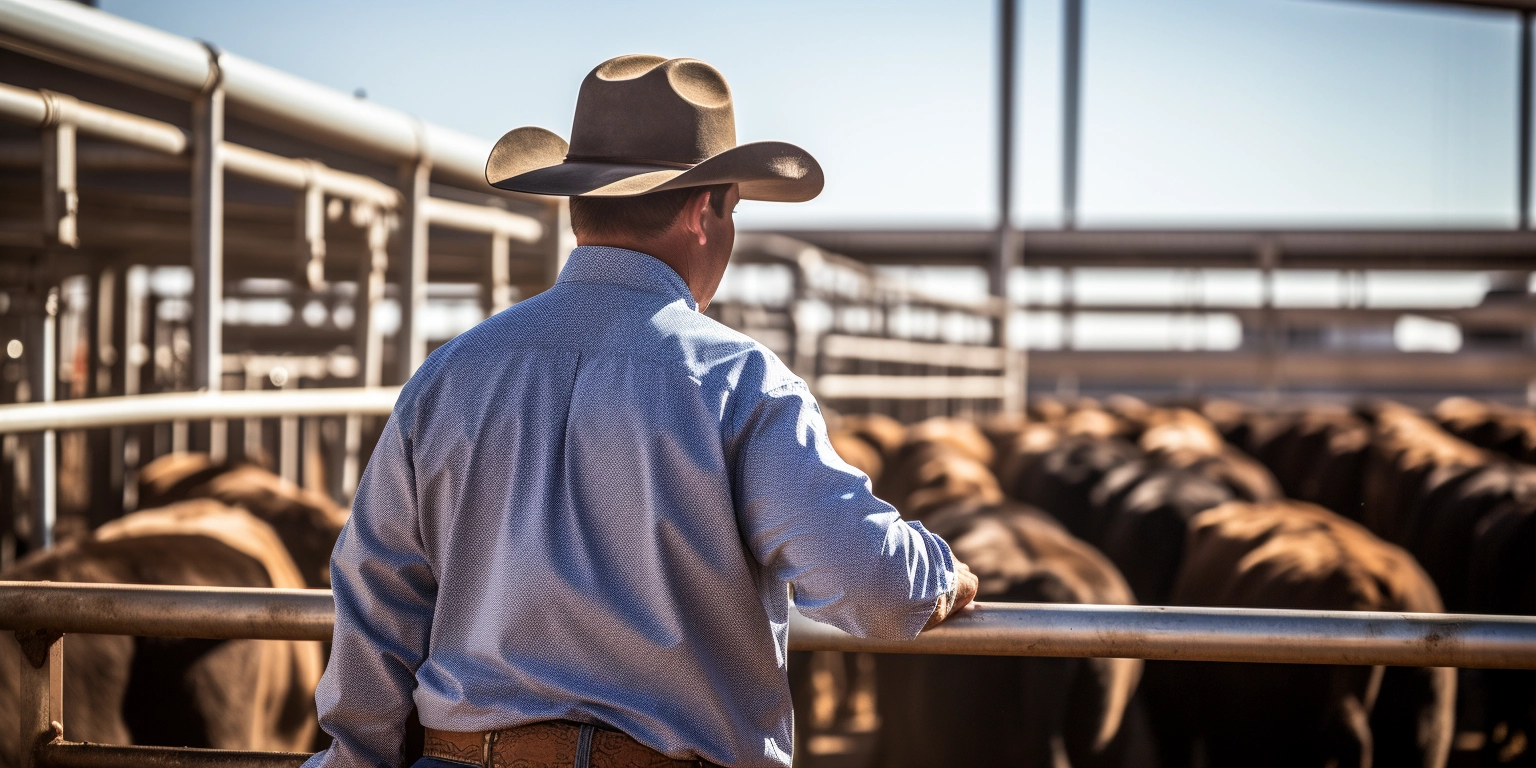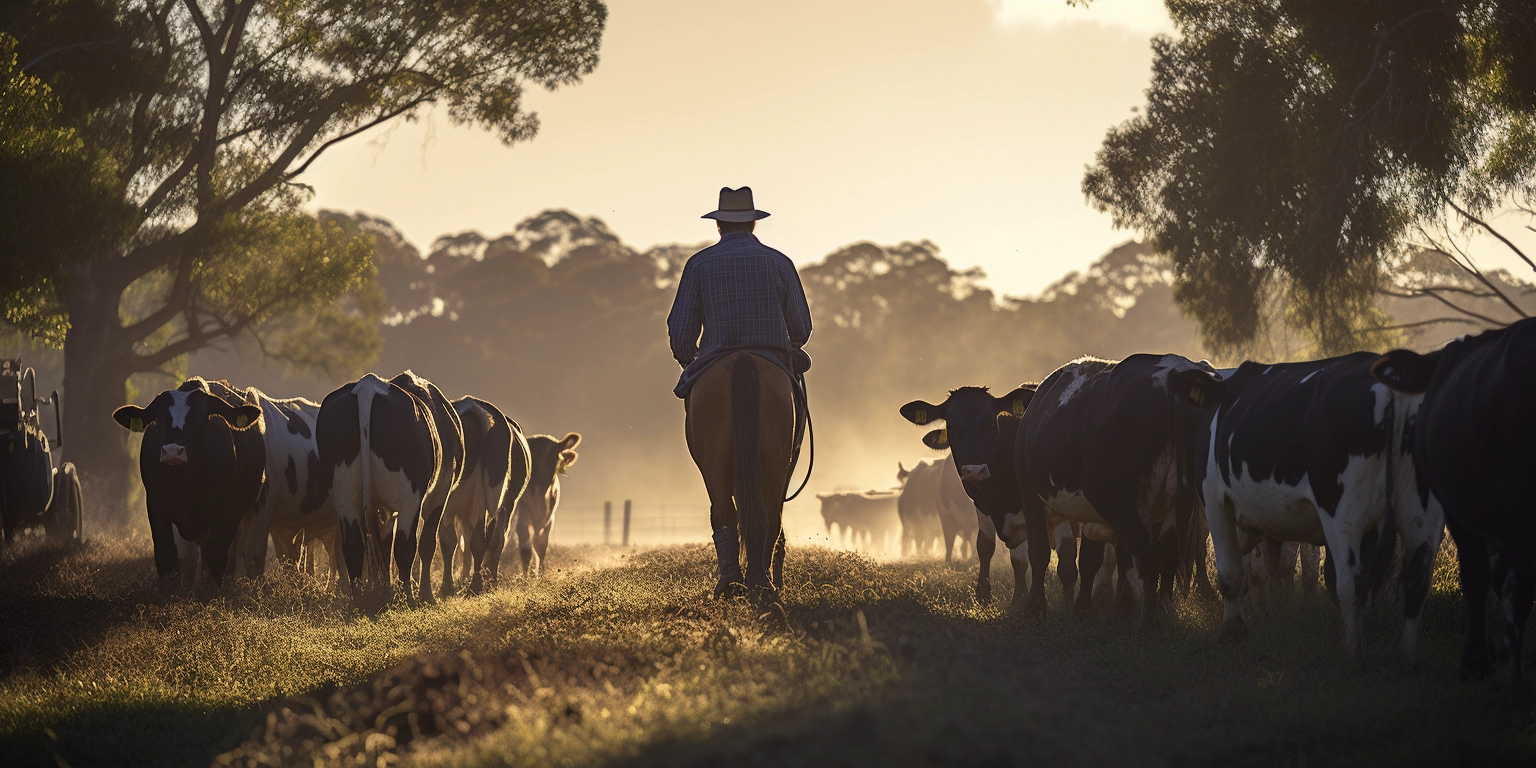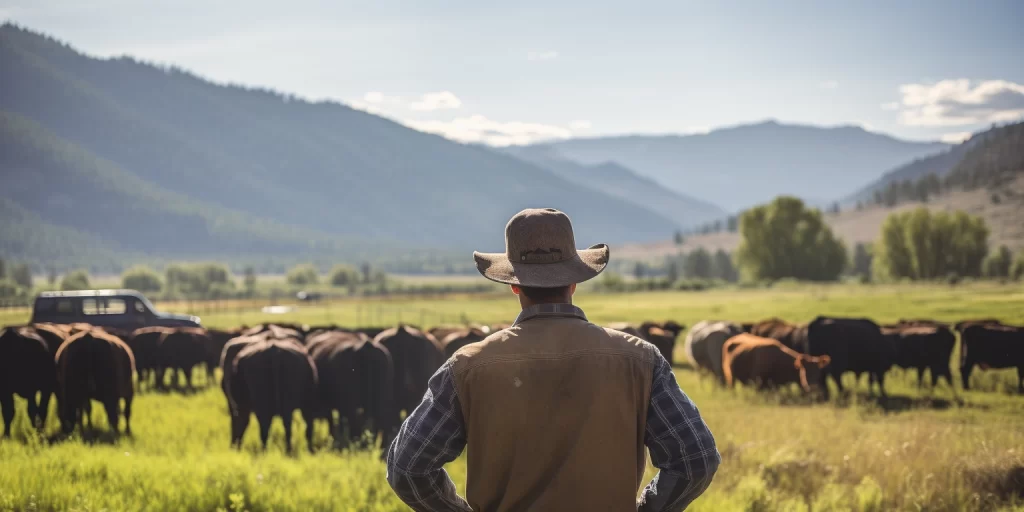Introduction
Choosing the right equipment for your livestock is pivotal to the success of your agricultural venture. The appropriate tools can significantly enhance animal welfare, ensure the safety of handlers, and streamline farm operations, making your agricultural practices more efficient and sustainable. However, the variety of livestock handling equipment available on the market can be overwhelming, making it crucial for farmers and ranchers to make informed decisions. This guide aims to provide comprehensive advice on selecting the right equipment for your livestock, taking into consideration the specific needs of different types of animals and the size of your farm operations. Whether you manage a small family farm or a large commercial ranch, the goal is to help you invest in equipment that will contribute to the productivity and well-being of your animals and your business.
Understanding Your Needs
Before diving into the vast sea of livestock handling equipment, it’s essential to assess your farm’s specific needs. The size of your operation is a primary consideration; the equipment suitable for a small hobby farm will differ vastly from what is needed for a commercial-scale ranch. Similarly, the types of animals you raise dictate the kind of equipment you’ll require. Each species has unique handling, feeding, and care requirements that must be met with tailored solutions. Moreover, your management practices, whether you’re leaning towards intensive farming or organic methods, will influence your equipment choices. Identifying your farm’s size, the variety of animals, and your management approach will provide a solid foundation for making informed equipment selections that align with your operational goals and animal welfare standards.
Core Equipment by Animal Type
When it comes to livestock equipment, one size does not fit all. Here’s a breakdown of essential tools based on different types of animals:
– Cattle: The cornerstone of cattle equipment includes squeeze chutes for safe handling during medical treatments or tagging, durable headgates to secure animals, feeders and water troughs designed for easy access and minimal waste, and sturdy fencing to safely contain animals.
– Sheep: For sheep, consider investing in drafting gates to efficiently separate animals for treatment or management, shearing tables to reduce stress and injury risk during wool harvest, and appropriate feeders that minimize feed contamination and waste.
– Pigs: Equipment for pigs should include farrowing crates to support the health of sows and their piglets, durable feeders and waterers designed for the specific eating and drinking habits of pigs, and penning solutions that accommodate the social nature of pigs while ensuring safety.
– Horses: Essential horse equipment features stalls that provide a safe, comfortable environment, round pens for training and exercise, feeders and automatic waterers tailored to horses’ specific needs, ensuring their health and well-being.
– Poultry: Poultry farmers should look for coops that protect birds from predators and harsh weather, nesting boxes that encourage egg-laying, and feeders and waterers designed to prevent spillage and contamination.
Selecting the right equipment for each animal type not only supports their health and productivity but also enhances the overall efficiency of farm operations.

Special Considerations for Small Farms
Small farms often operate under unique constraints, including limited space and tighter budgets, making the choice of livestock equipment especially critical. For these operations, versatility and efficiency are key. Multifunctional equipment that can serve multiple purposes or handle different types of animals can be a game-changer, offering greater flexibility and reducing the need for numerous specialized tools. Portable equipment also plays a vital role in small-scale farming. Items like mobile fencing systems, portable feeders, and waterers can be particularly valuable for rotational grazing systems, allowing for the efficient use of pastureland and improving soil health and forage quality.
Furthermore, small farms should prioritize equipment that is easy to maintain and durable, ensuring longevity and cost-effectiveness. Given the closer relationship many small farm operators have with their animals, choosing equipment that also prioritizes animal welfare and safety—such as gently designed handling systems—can improve the overall health and productivity of the livestock. By carefully selecting equipment that aligns with their specific needs, small farms can maximize their resources, enhancing their sustainability and operational efficiency.
Choosing Equipment for Medium to Large Operations
For medium to large-scale operations, the focus shifts towards optimizing efficiency and productivity to manage a larger number of animals effectively. Automation becomes a significant factor in equipment selection, with automated feeding, milking, and egg collection systems offering substantial labor savings and consistency in animal care. These technologies not only improve operational efficiency but also allow for more precise management of diets and health monitoring, leading to improved animal welfare and production outcomes.
Investing in durable, high-capacity equipment that can withstand the demands of a larger operation is crucial. Medium to large farms also need to consider the scalability of their equipment choices, ensuring that their investments can grow with their operations. Compatibility with existing systems is another important factor, as integrating new equipment with current operations should be seamless to avoid disruptions.
As these operations often involve a significant number of employees, choosing equipment that is safe and easy to use is essential to prevent accidents and ensure smooth day-to-day operations. Training staff on the proper use and maintenance of new equipment is also critical to maximizing the benefits of these investments.

Safety and Welfare
At the core of selecting the right livestock handling equipment is the safety and welfare of both the animals and the people working with them. Equipment design plays a critical role in minimizing stress and injury risk to livestock, with features such as smooth edges, non-slip surfaces, and sufficient space being crucial elements to consider. For example, well-designed handling systems can significantly reduce the stress animals experience during routine procedures, such as vaccinations or tagging, thereby improving their overall well-being and productivity.
For farm workers, ergonomically designed equipment can reduce the risk of injury and improve working conditions. This is particularly important in tasks that require repetitive motion or heavy lifting. Safety features, such as emergency stop mechanisms on automated equipment, are also essential to prevent accidents.
In addition to physical safety, the mental well-being of animals is an important consideration. Equipment that allows for natural behaviors and minimizes distress—such as open spaces that prevent overcrowding and systems that reduce noise levels—can have a positive impact on animal health and farm productivity. Prioritizing safety and welfare in equipment selection not only supports ethical farming practices but also contributes to the long-term success of the operation.
Innovation and Technology
The agricultural sector is witnessing an unprecedented wave of innovation and technological advancement, transforming the landscape of livestock management. Smart technologies, including precision livestock farming tools, have begun to play a crucial role in enhancing the efficiency and productivity of farms. Innovations such as wearable health monitors for animals, automated feeding systems that adjust to the nutritional needs of each animal, and drone surveillance for monitoring herd movement are becoming increasingly common. These technologies offer the potential to drastically reduce labor costs, improve animal health through early disease detection, and optimize feed efficiency, ultimately leading to higher productivity and sustainability.
However, the adoption of high-tech solutions is not without its challenges. The initial investment can be significant, and there may be a learning curve for farm staff to effectively utilize these technologies. Moreover, the integration of new systems with existing infrastructure requires careful planning. Farmers and ranchers considering these advanced technologies should evaluate their long-term benefits, considering factors such as potential increases in productivity, improvements in animal welfare, and savings on labor. Keeping abreast of the latest innovations and their practical applications on similar operations can guide informed decisions on technology investments.
Budgeting and Investment
Investing in the right livestock handling equipment is a critical decision that requires careful financial planning. Prioritizing purchases can help manage budget constraints, focusing first on equipment that addresses immediate safety concerns or significantly improves operational efficiency. It’s also important to consider the long-term benefits of each investment, such as potential savings on labor, improvements in animal health and productivity, and reductions in the risk of injury to both animals and handlers.
For operations facing tight budget constraints, exploring the secondary market for used equipment can be a viable option. Many pieces of farm equipment are built to last, and purchasing used items can provide substantial savings. Alternatively, leasing equipment or engaging in cost-sharing arrangements with neighboring farms can provide access to necessary tools without the upfront investment.
When evaluating equipment options, farmers should also consider the potential for government grants or subsidies designed to support agricultural improvements and innovation. These programs can offer financial assistance for investments in safety equipment, technology upgrades, or efficiency improvements, helping to offset initial costs and encourage modernization.

Maintenance and Upkeep
The longevity and performance of livestock handling equipment significantly depend on regular maintenance and timely repairs. Implementing a routine maintenance schedule can prevent minor issues from becoming major problems, ensuring equipment remains safe and functional. This includes regular inspections, cleaning after use, and the replacement of worn parts. Keeping maintenance records can also help track the equipment’s performance and identify when it might be more cost-effective to replace rather than repair.
Understanding the manufacturer’s recommendations for care and maintenance is crucial. Some equipment may require professional servicing to maintain warranties or to ensure complex systems are correctly handled. Investing in training for staff responsible for maintenance can pay dividends, ensuring they have the skills needed to keep equipment in top condition.
For farms relying on advanced technologies, staying updated with software upgrades and troubleshooting tips is essential to maximizing the benefits of these investments. Many manufacturers offer support services or training sessions to help farmers make the most of their equipment, enhancing its functionality and extending its lifespan.
Conclusion
Selecting the appropriate livestock handling equipment is a multifaceted decision that extends beyond immediate functional needs to encompass considerations of animal welfare, worker safety, operational efficiency, and long-term financial planning. The right equipment can significantly enhance the productivity and sustainability of your farm, ensuring that both animals and handlers are provided with a safe and conducive working environment. By carefully evaluating your farm’s specific needs, considering the scale of your operations, and keeping abreast of technological advancements, you can make informed decisions that will benefit your farm for years to come.
Remember, the goal is not just to choose equipment that fits your current needs but to anticipate future growth and challenges. Investments in quality, durability, and advanced technology can provide adaptability to changing circumstances and evolving industry standards. Through strategic planning and informed decision-making, you can ensure that your farm remains competitive and sustainable in the dynamic landscape of modern agriculture.
Partnering With Morand
We invite all farmers, ranchers, and agricultural producers to consider their livestock handling equipment needs in the context of this guide. Reflect on your operations, the well-being of your animals, and the safety of your workers as you explore equipment options. For those looking to update their equipment or expand their operations, we encourage you to consult with experts and vendors who can provide insights and solutions tailored to your specific requirements.
Morand Industries stands ready to assist you in finding the most suitable and innovative equipment options for your farm. With years of experience and a commitment to quality and customer satisfaction, we offer a range of products designed to meet the diverse needs of the agricultural community. Contact us to learn more about our products and how we can help you achieve your operational goals and ensure the welfare of your livestock.
Engaging with the Community
Finally, we emphasize the importance of engaging with the broader agricultural community to share experiences, insights, and best practices related to livestock handling equipment. Whether through local agricultural fairs, online forums, or industry conferences, participating in these conversations can provide valuable perspectives and help you stay informed about the latest trends and innovations. Collaborating with fellow farmers and industry experts can also uncover opportunities for partnerships, co-operative investments, and shared learning experiences that can further enhance the efficiency and sustainability of your operations. Together, by making informed choices about our livestock handling equipment and sharing our collective knowledge and experiences, we can continue to advance the agricultural industry, ensuring its resilience and prosperity for future generations.

